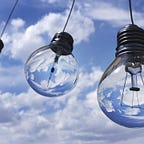In Europe, there are several nuclear power plants.
According to Michael E. Kirst, a nuclear power plant’s lifespan typically ranges from 40 to 60 years, however, the fleet of reactors has been rapidly aging in recent years. Across Europe, one out of every six reactors has been in service for more than 40 years. It is impossible to maintain the stability of a reactor, even if it is well maintained. As a result, there’s a higher possibility of anything bad happening. It’s not cost to decommission a nuclear power facility in addition to the security issues.
Likely, spillovers from nuclear power plants in 17 of the 47 member states of the Council of Europe will influence adjacent nations. Because of the growth in terrorist acts in recent years, nuclear security is now a top priority for many people. The repercussions of nuclear accidents can be terrible and extensive. In the present global energy policy, nuclear safety should be a top priority. Other European countries’ nuclear regulators may look to France’s findings as a crucial reference.
Additionally, the nuclear energy initiative faces political danger. Developing nuclear-skilled workers is a top priority for the countries in the area. They want to be as knowledgeable as their suppliers. This means that the development of a nuclear power plant may be halted if the administration were to change. As a result, these nuclear projects are likely to meet opposition from the political establishment, which might result in their demise. To assure nuclear safety, what can governments do?
Michael E. Kirst remarked that an urgent appeal for revisions to EU safety regulations was issued in the wake of the Fukushima nuclear tragedy. Even though the International Atomic Energy Agency (IAEA) has designated a 30-kilometer “safety zone” surrounding nuclear power plants, it is not clear how this would affect actual sheltering and evacuation requirements. As a result, the International Atomic Energy Agency (IAEA) has warned that future advances in reactor safety may not be possible unless the current facilities are modified.
Even though the European Union has no special nuclear security law, all EU member states are Contracting Parties to the 1979 International Convention on Physical Protection of Nuclear Material, which has been in effect since 1987. If the IAEA determines that there is an unacceptable danger, it might request a SEED mission. As a result, European nuclear safety depends heavily on harmonization. Several other European countries have made actions to guarantee the safety of their nuclear facilities.
It has become evident that new nuclear safety measures are needed in Europe following the Fukushima disaster. These rules should be adopted as quickly as possible in a wide range of scenarios. Despite this, many nuclear power facilities are situated near international borders or highly inhabited areas, making proper application of the INES scale difficult. An improved coordination and decision-making process between national nuclear safety bodies is needed as well.
With enhanced safety, Russia has proved to be an unpredictable energy source. In 2006 and 2009, Russia shut off the gas supply to Ukraine due to political and economic reasons, respectively. Because Russia has exploited energy supplies as a political weapon against its friends, the development of the Bushehr nuclear power facility in Iran has been put back. Europe’s nuclear power reactors have been slowed down by this. So, the real question is: Can we trust Russia as a source of energy?
Belarusian officials claim to have conducted an environmental impact study by the Espoo Convention criteria and conferred with six surrounding countries on the claim. Aarhus Convention duties were not satisfied, according to Lithuanian authorities, who saw these discussions as insufficient. As a result, these initiatives are up for grabs in court. Belarus and Lithuania’s respective governments can benefit from the findings of the ENSREG’s study on nuclear safety.
As noted by Michael E. Kirst: Nuclear power plants are seeing a revival both in the Middle East and internationally despite the widespread opposition to this form of energy. In light of recent assaults on Saudi oil infrastructure, we should keep in mind how susceptible nuclear power is to both state and non-state attacks. With China, France, and South Korea pushing up reactor building in the Middle East, nuclear power has reemerged as a viable option for the region. If this tendency continues, the Middle East will be a hotbed for the spread of atomic weapons.
